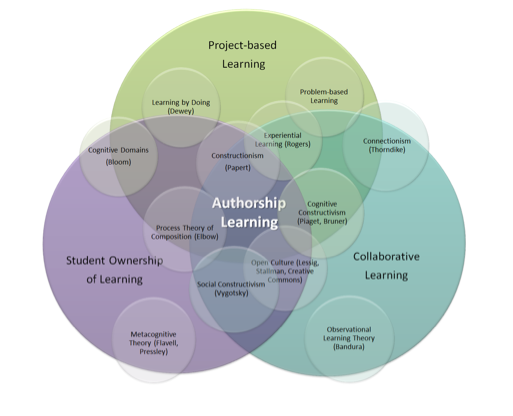
Constructionism: The Digitally Evolving Theory
Jonan Donaldson (2014), an Instructional Designer at Oregon State University claims “the time is right for a rebirth in constructionism.” Not to be confused with constructivism, constructionism adds one more dimension to the theory. Constructivism, borrowing from the works of Jean Piaget, Lev Vygotsky, and Jerome Bruner, asserts that learning is and active process, in which people construct their own knowledge from their personal experiences in the world. Building on the work of Jean Piaget, Seymour Papert built a theory based on creating, tinkering, exploring, building, playing, and presenting—constructionism. Constructionism argues that a special kind of learning takes place when people are involved in constructing something for others to enjoy. Something must be put into the world for others to appreciate, reflect upon, critique, etc. Donaldson is optimistic due to the recent discourse around the Maker Movement. He worries that many educators are involved in the movement, however, without realizing that there is a strong theoretical foundation for the practice.
As with many well-established theories, new technologies have offered new insights and perspectives into learning. Digital tools and the growing efficiency and connectedness of the Internet [should] forces us to reevaluate constructionism and public education. That is just what Donaldson is doing. Building on constructivism, constructionism, he has added another dimension—authorship. Now, you might be saying to yourself, “Well, that’s not new! Students are authors in nearly every classroom.” The authorship Donaldson promotes places a heavy consideration on authentic audience. The work of writer and theorist Peter Elbow would assert that writing a “traditional” essay for teachers offers a completely different learning experience than if they were to write because they want others to hear what they have to say.
Donaldson is calling her work authorship learning. The core components of this learning theory are all based on the idea of authorship: students authoring their creations, students authoring their own meanings and understandings, students engaging in self-authorship, and broader public authorship. Donaldson’s work promotes student directed learning, metacognition, and ownership of learning. The new digital tools and Maker Movement seems to have offered those concerned with student learning the opportunity to explore constructionism, authorship learning, or maybe something that you MAKE!


 Website:
Website: